
Return to - the Ancient Parish of Standish

The Manor of Worthington.
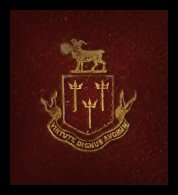
within the - Ancient Parish of Standish Lancashire England.
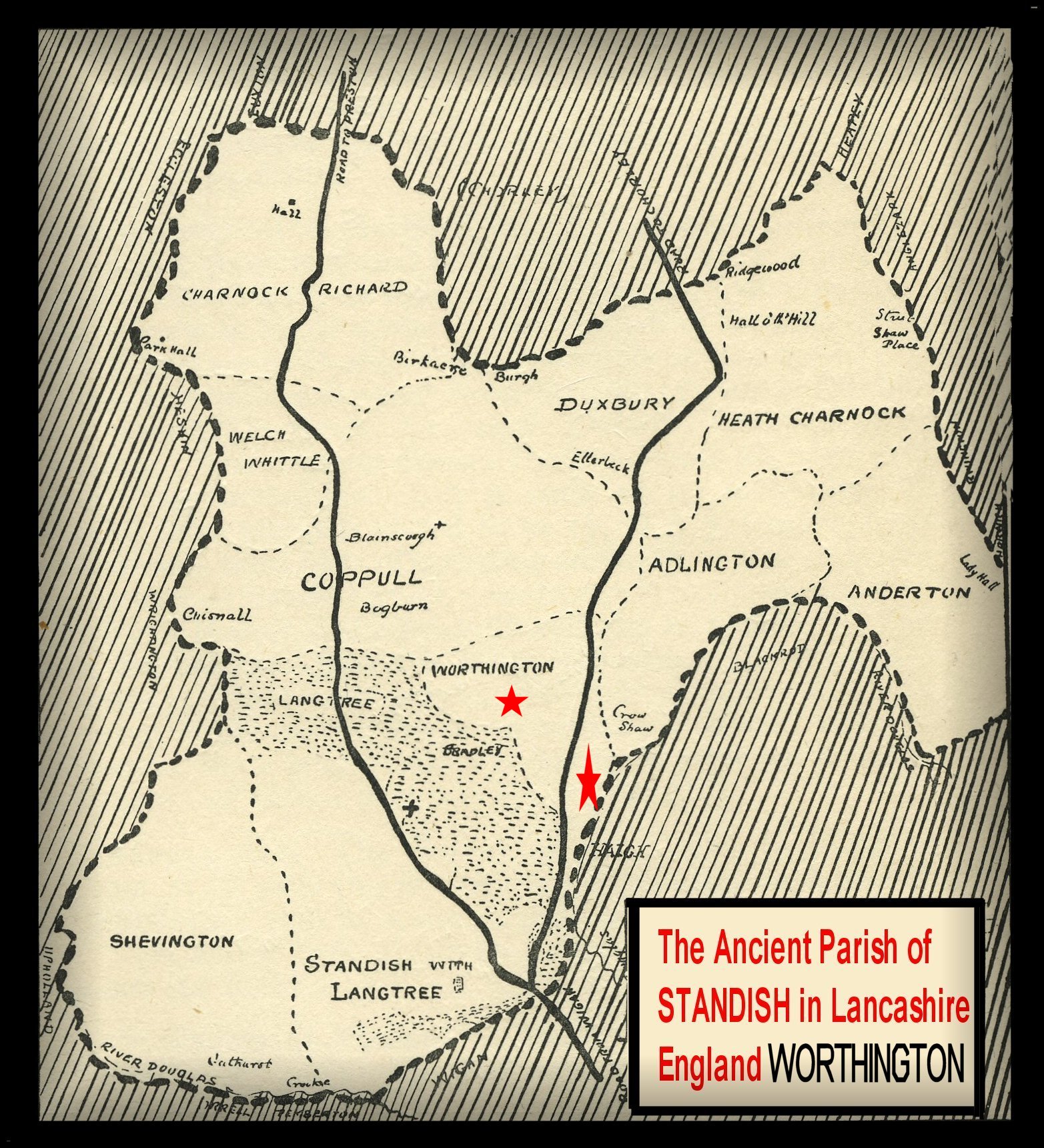
![]()
Wurthington, 1220; Worthinton, 1242; Worthington, 1290; Werthinton, 1302. The 'g' seems to be inserted or omitted indifferently.
The Worthington family resided at Worthington in Standish, Lancashire from about 1150, shortly after the Norman Invasion of 1066. Their landholdings in the area were extensive and their country seat, Worthington Hall, was built in 1577. At that time the village of Worthington was entirely rural and comprised a handful of cottages.
In 1201 the first mention is made of the Coppull Family, the two family names were possibly the origin of the township “Coppull-with-Worthington”.
In 1212 it was found that WORTHINGTON and Coppull were held of the lord of Manchester by the service of half a knight's fee, Thomas de Worthington being the immediate tenant. Suit to the court of Manchester was required, the lord of Worthington being one of the judges; the grith-serjeant also could demand puture, the township being in the upper bailiwick of the barony. The connexion with Manchester continued to be recognized, at least nominally, down to the 17th century.
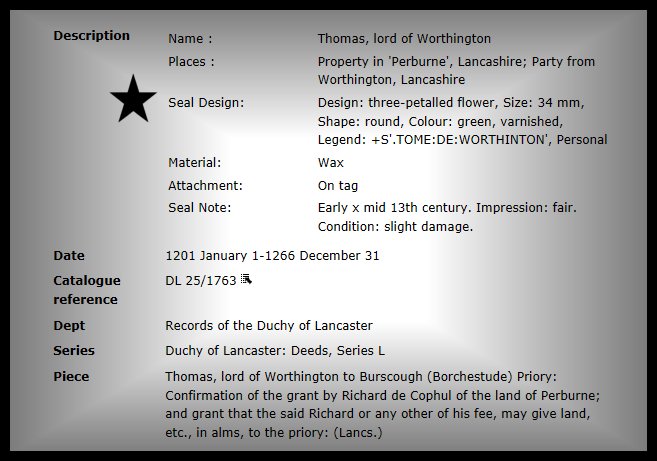
Thomas de Worthington's tenure was 'of ancient time' in 1212, but, though the family continued to hold the manor until the end of the 17th century. Thomas, called son of Robert de Worthington, gave a part of his land to Cockersand Abbey. In 1227 Robert Grelley agreed with Thomas de Worthington asto the suit due to the court of Manchester.

Thomas's son William de Worthington held the half-fee in 1242, and as late as April 1282. Soon afterwards Hugh deWorthington appears, but he did not hold the manor long, William de Worthington contributing to the aid of 1302 for half a fee, except the tenth part, in Worthington. William, who appears to have had four sons or more, was still in possession in 1320, and perhaps in 1332, but his son Hugh de Worthington and John de Heaton paid in 1346–55 to the aid in respect of the half-fee in Worthington and Heaton. The wardship of the manor and lands of Hugh de Worthington and of John his son and heir was in 1369 granted to Thomas de Worthington and Nicholas his brother. William son of Hugh, however, seems to have succeeded, and the manor descended to Hugh Worthington, who held it in the time of Edward IV by the ancient services.
Worthington Family Papers 1439 - 1684.


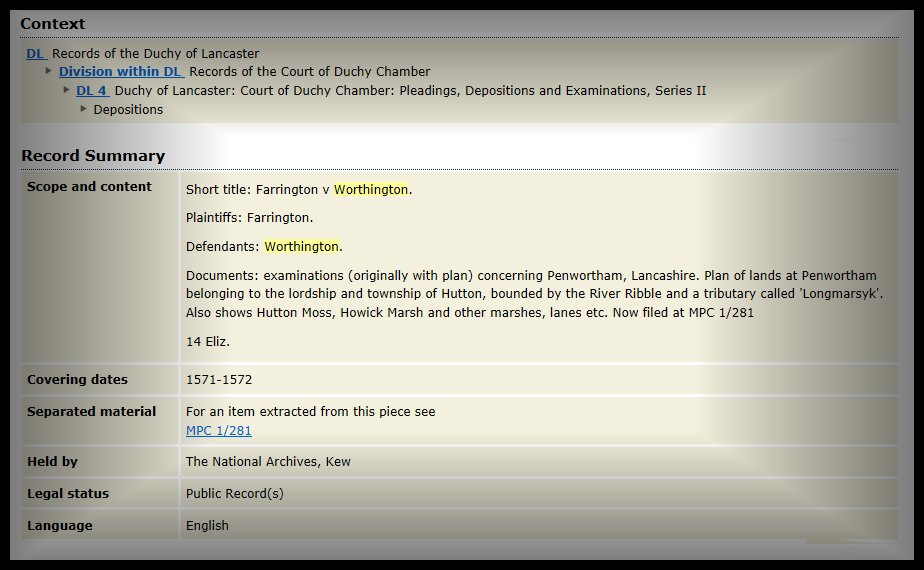







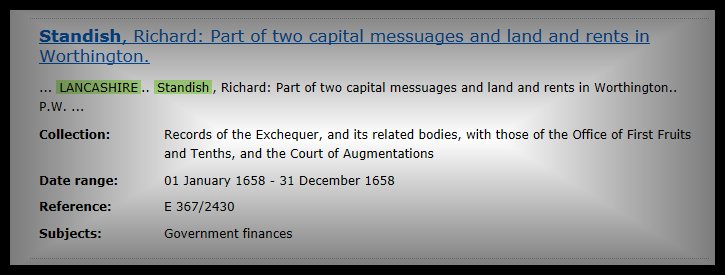

![]()
Residents of the Manor of Worthington 1588.
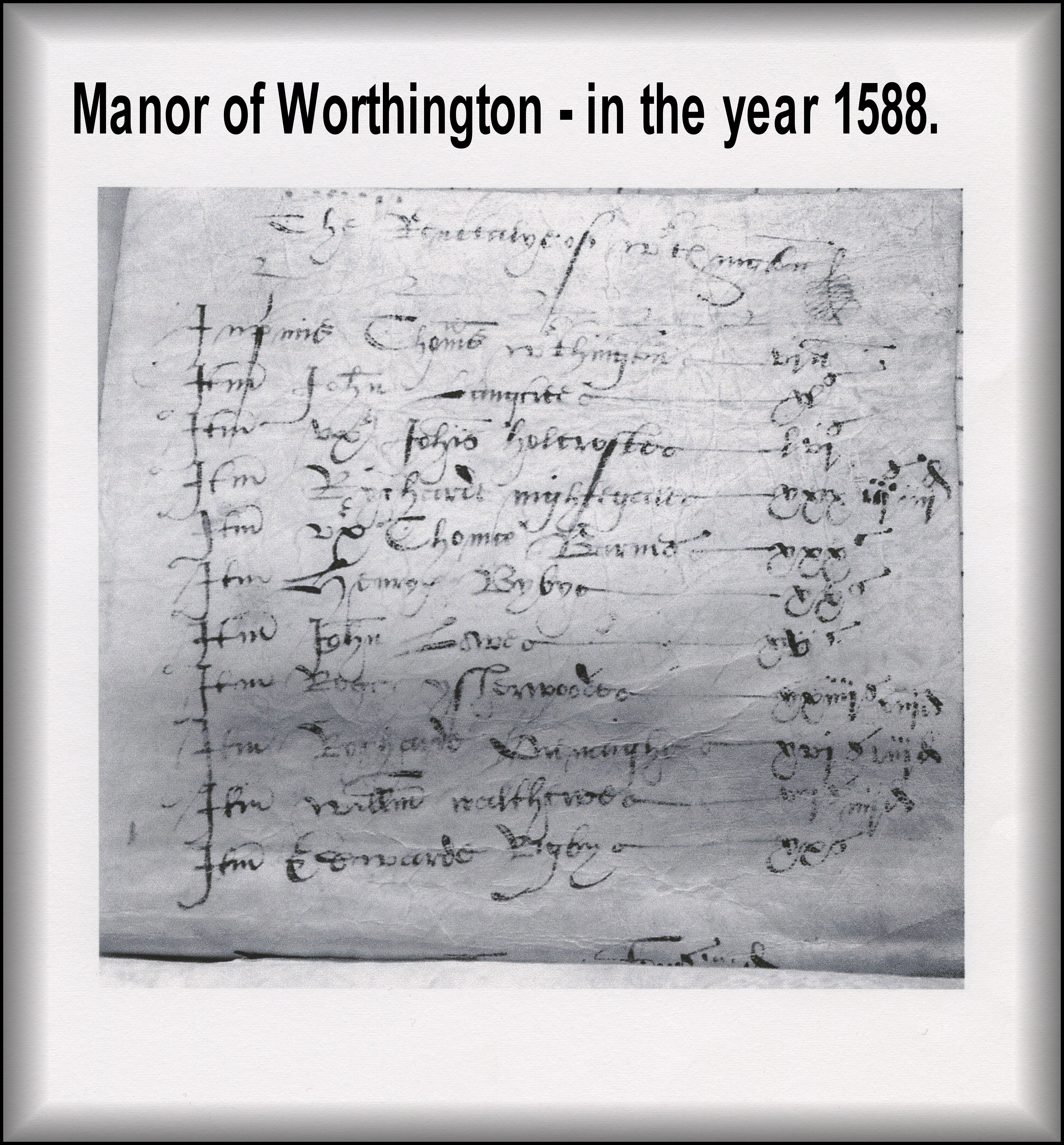
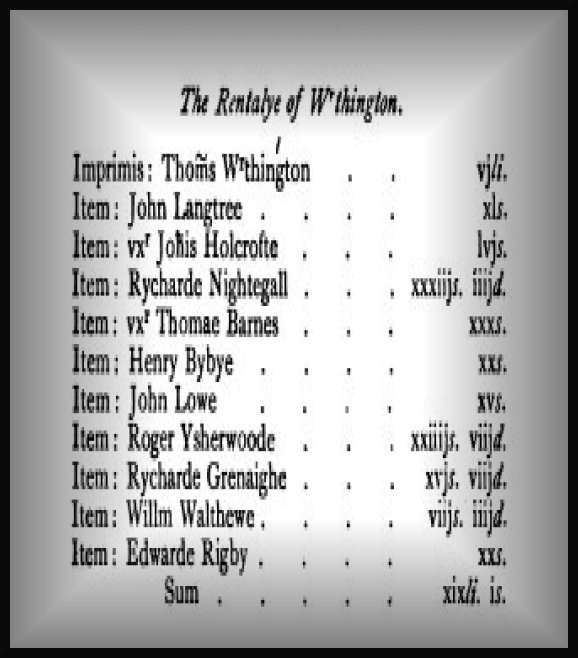
Residents of the Manor of Worthington 1636 - 1832.
1636. To Court - Thomas Isherwood.

1640. To Court - George Bradley.

1657 New Constable.

1675 Apprenticeship.

1678 Attendance at Church demanded.

1698 Settlement for sevice rendered.

1701 Hard times for the Nicholson family.

Years 1711 - 1770 . "the Order of the Boot" kicked out of Worthington.


Years 1711 - 1832 . returned to Worthington.


1711. Poor assessment records.

1724 The road from Worthington Manor House to Worthington Hall.

Years 1802 - 1824 - Bastardy.


![]()
Worthington Family Pedigrees were recorded in 1567 -1613 - 1664.
1567
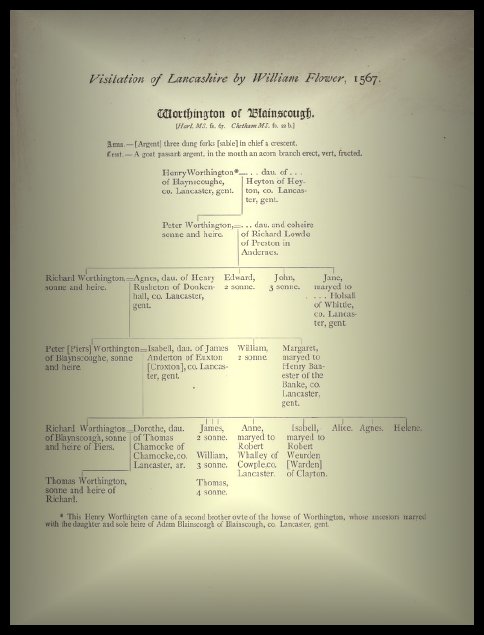
1613
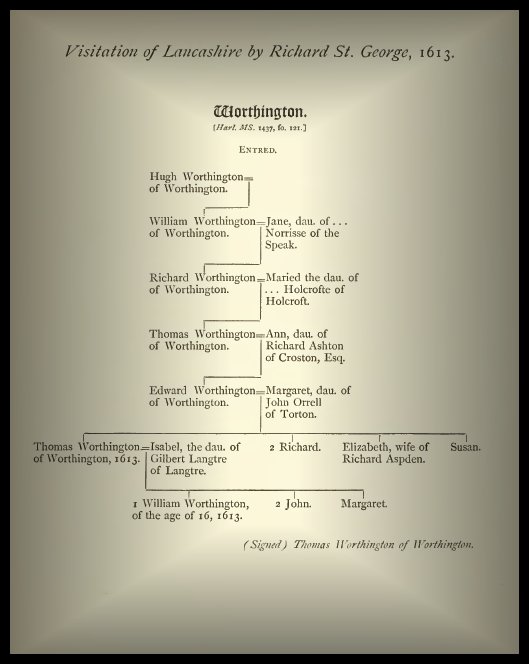
1664
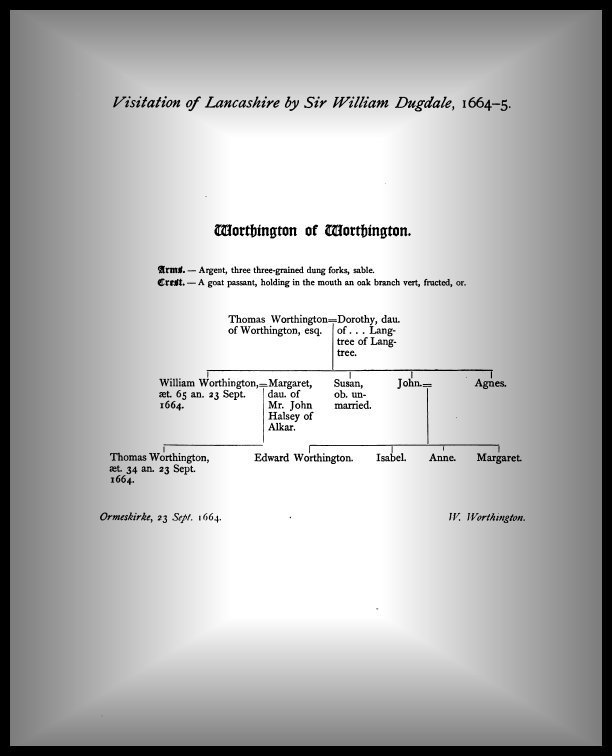
1664
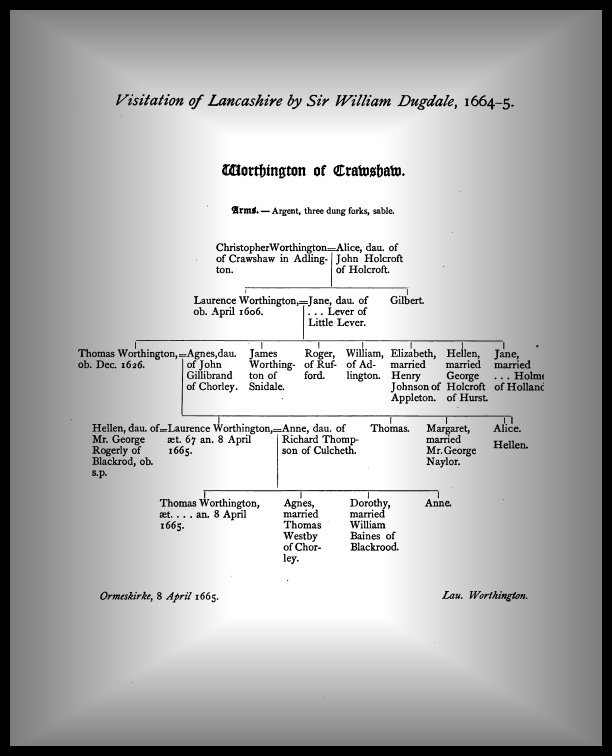
Crawshaw - the common Adlington Chorley 2012.
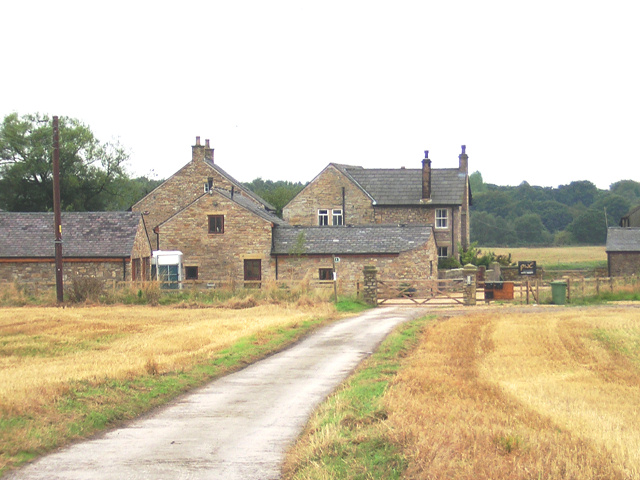
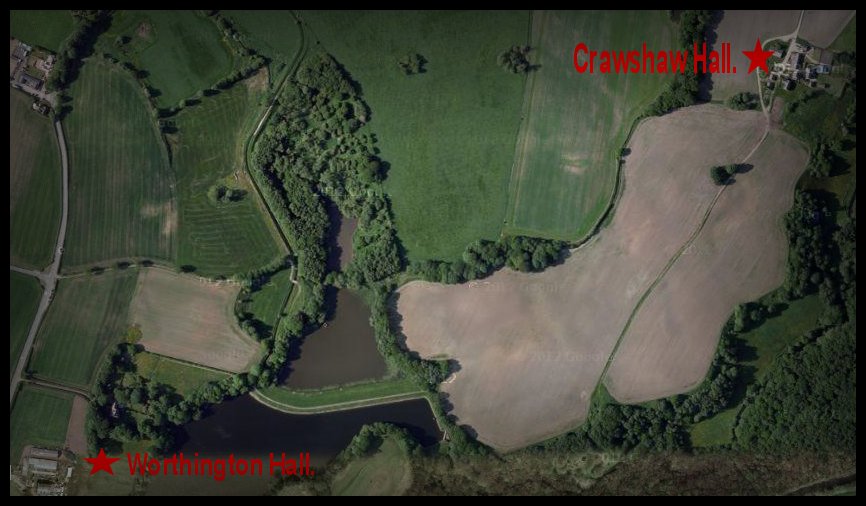
1664
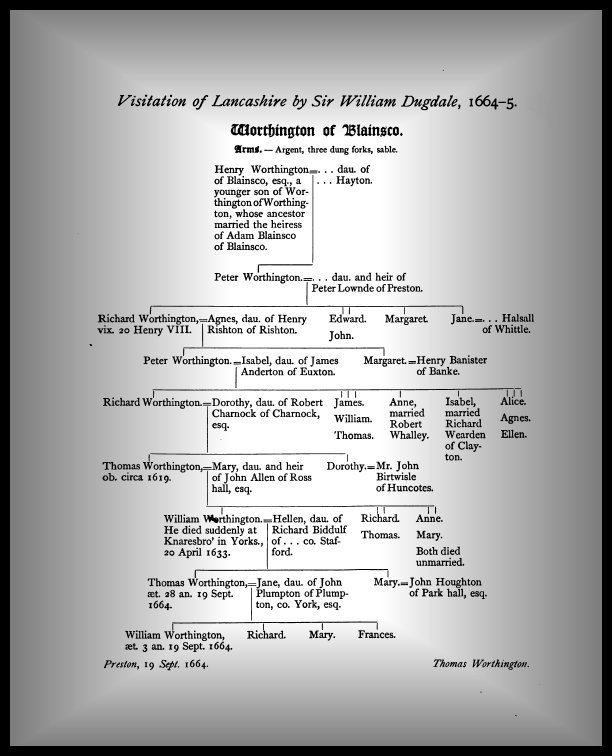
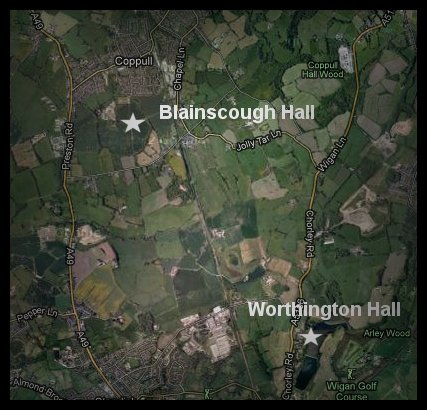
Blainsco - The Worthington Family.
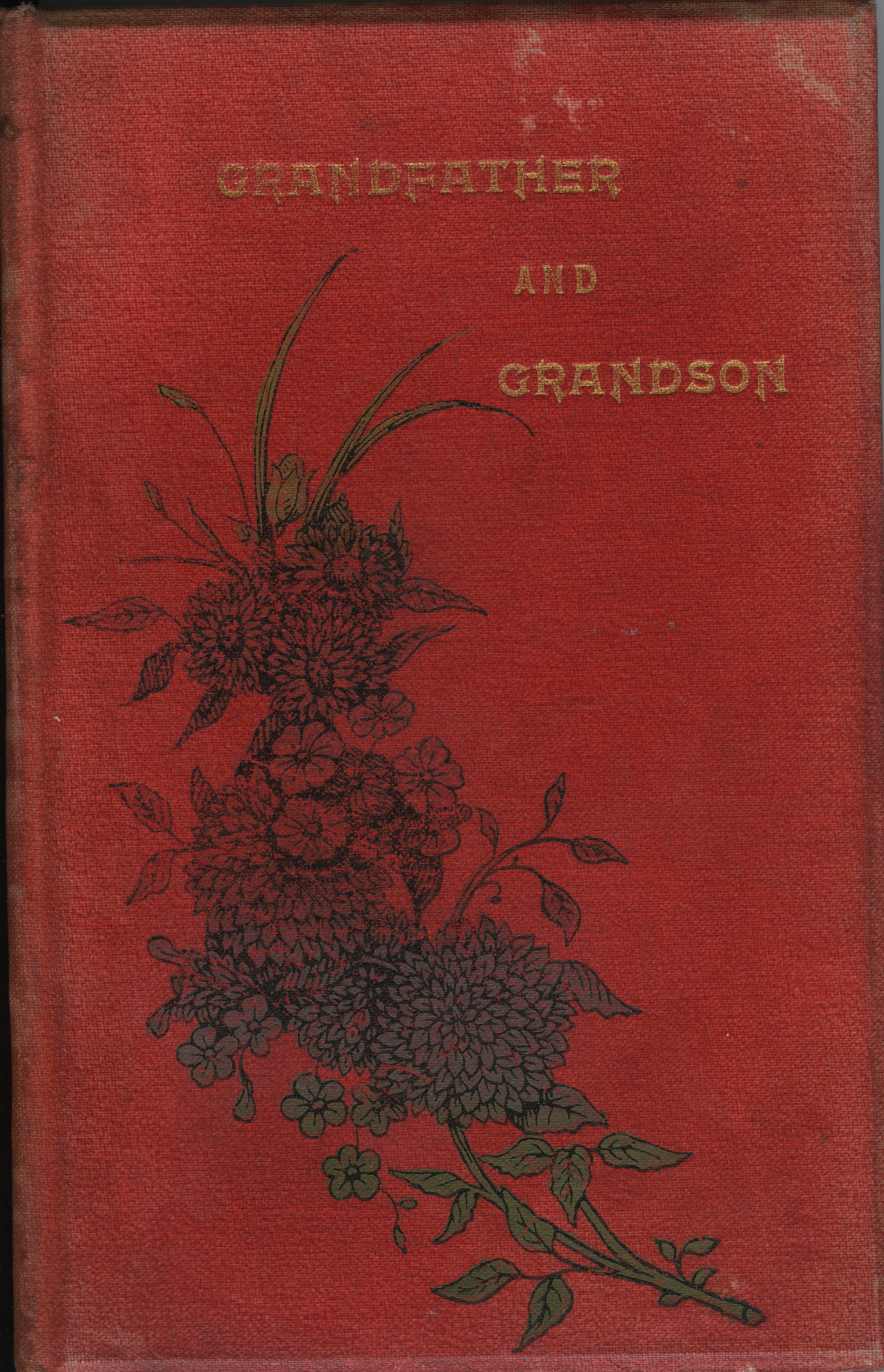
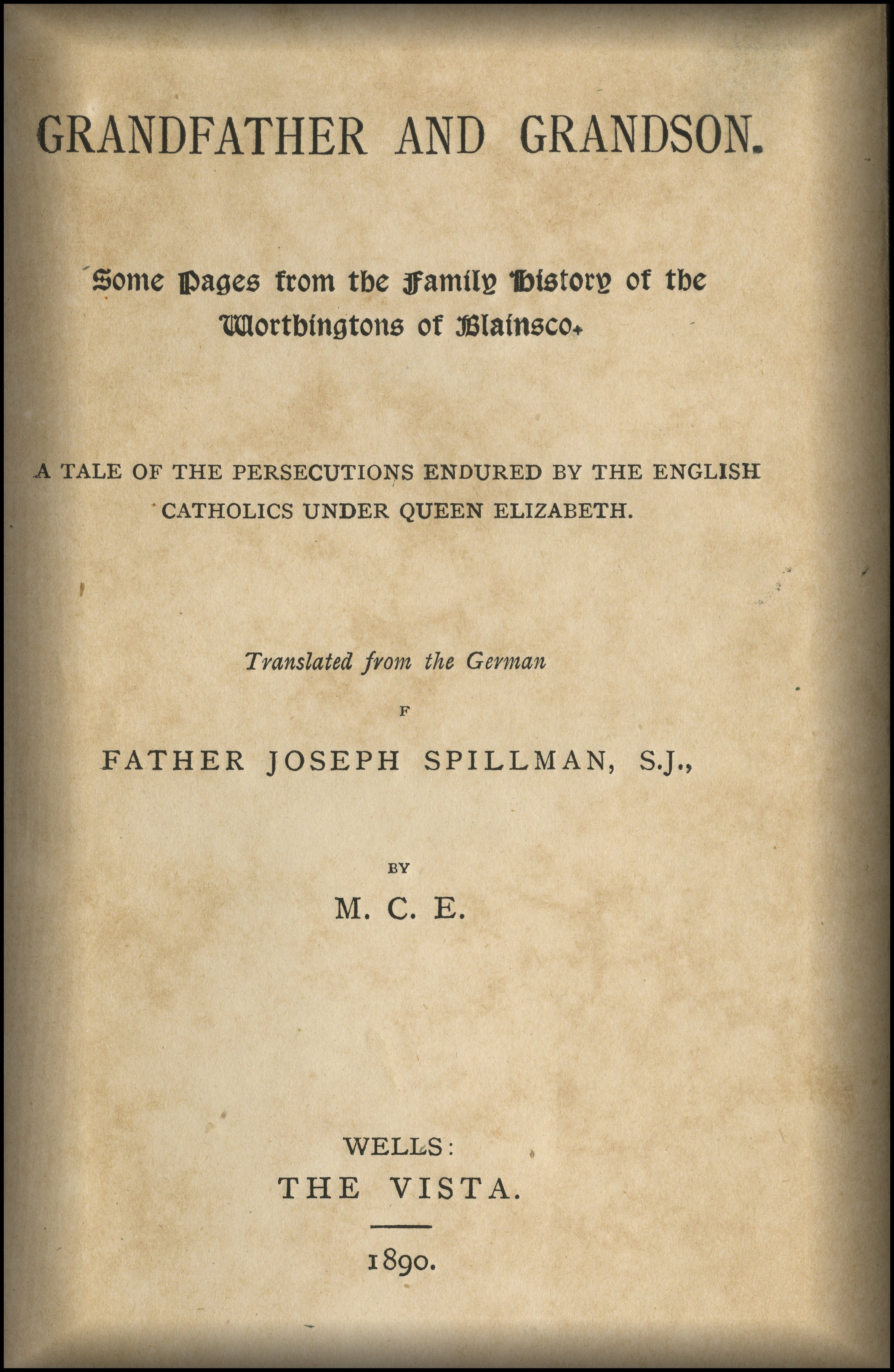
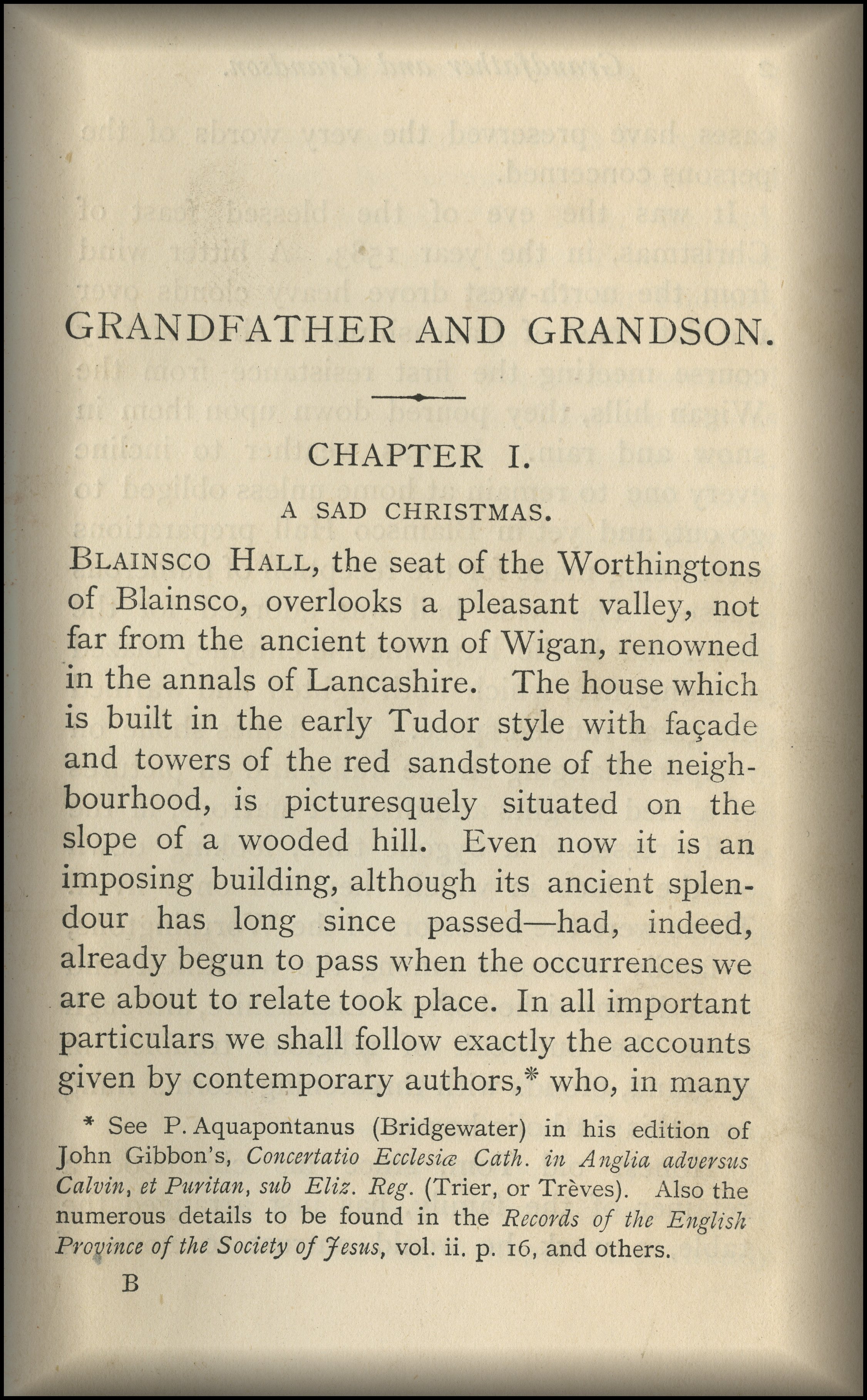
![]()
1570. Thomas Worthington of Blainsco Coppull Lancashire.
Worthington,
Thomas (1549–1626), Roman
Catholic priest and biblical scholar, was born at Blainscough Hall, near
Wigan, Lancashire, one of the four sons and five daughters of Peter Worthington
(c.1514–1577) and Isabel Anderton, daughter of James Anderton, of
Euxton, Lancashire. Thomas's brother Richard later married Dorothy Charnock, of
Charnock, Lancashire. Privately educated, Thomas attended Brasenose College,
Oxford, between 1566 and 1570 and received a BA degree. He entered the English
College, Douai, on 15 February 1573, when Gregory Martin was dean and professor
of scripture, and later became one of his assistants in translating the Vulgate Bible. In 1577, after his BTh graduation at Douai
University and ordination at Cambrai, he lectured in theology at the college.
In 1579 Worthington returned to England for ministry and managed to escape
capture for four years until Richard Topcliffe arrested him at Islington and
put him in close confinement in the Tower of London. He was not indicted.
Instead, in a royal warrant of 15 January 1585 he was listed among twenty
priests sentenced to be banished to France, and he reached Rheims in the
spring. During his absence Gregory Martin had completed his English version of
the Bible, and a New Testament
appeared with annotations by Richard Bristow. Worthington lectured on scripture
at Rheims, where the English College was in exile, for two years and began his
commentary on the Old Testament. In 1587 William Allen
sent him to Deventer as a military chaplain but by May 1588 he had enrolled in
the university at Trier to complete his doctorate in theology. He returned to
Rheims to be vice-president of the college and lecture for a year on moral
theology but in July 1591, after resigning his offices, he moved to Brussels, presumably
to continue his work on Martin's text. At Louvain, Thomas Stapleton was the
professor of scripture, whose lectures Worthington would later edit for
publication. A new text of the Vulgate had appeared by
order of Sixtus V and Allen was in Rome, at the request of Clement VIII, with
the editors preparing more emendations. After William Rainolds and Allen died
in 1594, Worthington, as the sole survivor among Martin's original assistants,
took up the task of a final version. He was out of touch with the college at
this time, since in 1596, in his letter about the students at the English
College in Rome, he wrote several errors about the current regime at Douai
under Richard Barret.
Nevertheless, Worthington was appointed by Cardinal Cajetano, at the recommendation
of president Barret and the faculty of the college, to become president of
Douai College in July 1599. He would be notable for his literary achievement,
but he failed to impose overdue reforms demanded at two visitations of Douai in
1599 and 1612. In his first year he produced four books at Antwerp: two
containing thirty-four Orationes academicae edited for his friend Thomas
Stapleton, and the Latin and English texts of his own The
Rosarie of Our Ladie. In 1608 he had printed at Arras two volumes by
Richard Bristow called Motiva, which presented
twenty-five ‘motives’ from scripture and tradition for membership in the
church. His most important work was the two volumes of The
Holie Bible Faithfully Translated into English, printed at Douai separately
in 1609 and 1610. In an unsigned preface he explained that his delay came from
a lack of money: ‘al proceded … of one general cause, our poore estate in
banishment’ (sig. 2). His style was eirenical: ‘we speake to you al … whether
you be of contrarie opinions in faith … or professe with us the same’ (sig. 4v).
His comments were so extensive that when the first volume reached the book of Job, ‘for avoiding prolixitie … we have for most part
contracted our Annotations into the margen’ (p. 1110). In a book totalling more
than 2300 pages in two quarto volumes Worthington had edited the finest example
of collaboration in the college's history.
In 1601 Worthington published his first polemical book, A
Relation of Sixtene Martyrs, in which the recent executions of laity and
priests in England were narrated while adding two ‘declarations’. In the first
he insisted that they suffered only for religion and not for treason as
charged; in the second he argued that the ‘Secular priestes agree with the
Jesuites’ (pp. 57–63), citing the praise of Cardinal Allen for them and
accusing their ‘adversaries’ of ambition. Worthington's esteem for the English
Jesuits led to misrepresentations about his policies in complaints to Rome.
However, the correspondence of Thomas Fitzherbert during 1608–10, as an
observer in Rome, later provided documentation to clear his name. Clearly
Worthington's attention was focused on books concerned with scripture or
polemics and not on the needs of the college, so that there was relief on all sides
as Matthew Kellison became president and Worthington was invited to the papal
court in 1613. There he received a pension and an appointment to the
Congregation of the Index, but after two years he sought leave to return to
England.
In 1615 Worthington entered into a controversy with the Church of England
theologian John White about the marks of the true church in his Whyte Dyed Black. His return angered Archbishop Abbot, who
commented that the pope had made Worthington ‘a Monsignor and a Protonotary Apostolike
to please the doting foole with a bable’ (Downshire MSS,
5.532). In 1616 Worthington visited Nottinghamshire and Derbyshire as
archdeacon of the clergy and tried to found a sodality for priests and laity.
He then began writing a manual based on scripture, An Anker
of Christian Doctrine, in four parts, which stirred up controversy by
1622 and was placed, along with the Douai Bibles, on
John Gee's list of popish books available for sale in London in 1624. Following
the lead of three nephews, John (d. 1652), Lawrence (d. 1635),
and Peter (d. 1613), who had become Jesuits earlier, he was also
admitted to the society by the provincial in London. He died during his first
year as a novice in 1626, while on a visit to Biddulph Hall, Staffordshire, and
was buried at Biddulph parish church. His importance at Douai was largely as
lecturer, writer, and the final editor of a bible which in its time was a
milestone for the survival of the Catholic community in England.
A. J. Loomie
Letters of Thomas Fitzherbert, 1608–1610, ed. L. Hicks, Catholic RS, 41 (1948) · Letters of
William Allen and Richard Barret, 1572–1598, ed. P. Renold, Catholic RS, 58
(1967) · A. F. Allison and D. M. Rogers, eds., The contemporary printed
literature of the English Counter-Reformation between 1558 and 1640, 2
vols. (1989–94) · P. Milward, Religious controversies of the Jacobean age
(1978) · H. Foley, ed., Records of the English province of the Society of
Jesus, 7 vols. in 8 (1875–83) · P. Guilday, The English Catholic
refugees on the continent, 1558–1795 (1914) · J. H. Pollen, ed., Unpublished
documents relating to the English martyrs, 1, Catholic RS, 5 (1908) · T. M.
McCoog, English and Welsh Jesuits, 1555–1650, 2, Catholic RS, 75 (1995)
· T. H. B. M. Harmsen, John Gee's Foot out of the snare (1624) (1992) · Report
on the manuscripts of the marquis of Downshire, 6 vols. in 7, HMC, 75 (1924–95), vol.
5 · D. M. Rogers, ed., facsimiles of Worthington's books, English Recusant
Library, 265, 266 [Douai Bible] · P. Worthington, The Worthington families
of medieval England (1985) · DNB
1671. Thomas Worthington of Blainsco Coppull Lancashire.
Worthington, Thomas (1671–1754), prior of Bornhem, was born on 23 November 1671, the fourth son of Thomas Worthington (d. 1708) of Blainsco in the parish of Standish, near Wigan, Lancashire.
Thomas Worthington of Blainsco in
the parish of Standish, near Wigan, Lancashire, and
his wife, Jane, eldest daughter of John Plompton of Plompton, Yorkshire. He
entered the English Dominican Priory at Bornhem, near Antwerp, on 27 November
1691, and made his vows there on 2 December 1692. He was then sent to study at
the English Dominican house of St John and Paul on the Coelian Hill in Rome. He
was ordained priest there in 1695. In the same year the Roman priory was
surrendered by the provincial authorities in favour of a new foundation in
Louvain. Worthington, together with Thomas Dryden (Sir Erasmus Dryden, bt), the
son of the poet John Dryden, made the official surrender to the Holy See.
Worthington subsequently moved with other members of the Roman community to the
College of St Thomas Aquinas at Louvain, where he became a lector in sacred
theology on 19 August 1704. On 10 March 1705 he was elected prior of Bornhem
and was re-elected on 12 March 1708. In April of the same year he was appointed
prior provincial of the English province by the master of the order. In August
1708 the death of his father brought him back to England, where he remained for
some years, installing himself first in London but then moving to Croxteth in
Lancashire in 1713, a year after ceasing his first term as provincial. In 1717
he was once more elected prior of Bornhem and took office in January 1718,
being re-elected in 1721 and 1725. In 1719 he had been created a master of
sacred theology by the master of the order. On 4 January 1726 he was
reappointed by the master as provincial, and in 1727 accompanied Dominic
Williams, now vicar apostolic of the northern district, to England, where he
acted as his chaplain, to the disquiet of the secular clergy, until 1729. In
1730 he became chaplain and resident priest on the mission of Middleton Hall,
the house in the parish of Rothwell, near Leeds, of Ralph Brandling. In an
important initiative, he was responsible for obtaining permission to reinstate
provincial chapters in England. The first provincial chapter to meet in England
since the Reformation subsequently assembled at the house of Mr Besley in
Panton Street, Haymarket, London, on 20 April 1730. On this occasion Father
Ambrose Burgis was elected provincial. Worthington served as provincial for a
third time from 1742 to 1746, but remained in residence at Middleton Hall. In
1750 he was elected prior of Bornhem for a sixth time but was excused by the
master of the order on the grounds of age. Age notwithstanding, his brethren elected
him provincial once more on 26 September 1750 and he died, aged eighty-three,
on 25 February 1754, in the fourth year of his provincialate at Middleton Hall.
He was buried on 26 February at Rothwell, near Leeds.
Worthington published An Introduction to the Catholic Faith,
by an English Dominican (1709). He also produced a number of scriptural
works as well as compiling historical works relating to the English Dominican
province. He also wrote a personal memoir of Dominic Williams, which is a
valuable source of information on the life and work of an eighteenth-century
English vicar apostolic.
Allan White
Blackfriars, London, Dominican archives, profession register · W.
Gumbley, Obituary notices of the English Dominicans from 1555 to 1952 (1955),
65–6 · R. Palmer, ‘Under the penal laws’, pt 1, Merry England, 67 (Nov
1888), 25–41 · R. Palmer, ‘Under the penal laws’, pt 2, Merry England,
68 (Dec 1888), 135–54
Blackfriars, London, Dominican archives · George Square, Edinburgh,
Dominican archives
![]()
WORTHINGTON HALL.
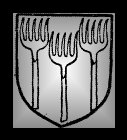
Worthington. Argent three dung-forks sable.
WORTHINGTON HALL, now a farm-house, stands on the east side of the high road from Wigan to Chorley, 3½ miles north of the former town and about 1¼ miles north-east of Standish Church. It is a rather lofty two-story building very much altered and renewed, the back and end walls having been rebuilt in stone and brick, the roof covered with blue slates, and the interior almost entirely modernized. The front, however, which faces north, retains a good deal of the original half-timber work, with a cove at the line of the floor and under the eaves. The hall was formerly lit by a long window of thirteen lights, placed high in the wall, but now built up. Much of the work is of a somewhat elaborate character, the sill at the level of the first floor being richly carved. On the head of the door, which is slightly arched, are the name and date 'Edwarde Worthington 1577, and in one of the spandrels the initials M.O. At the west end of the front a short low wing has been erected against the main building, and a portion of the front at the east end has been rebuilt in stone and brick. The interior shows some of the old oak construction.
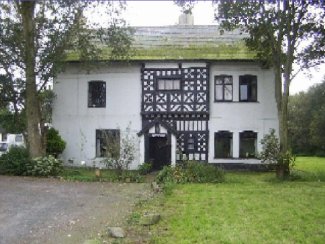
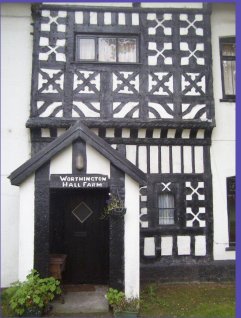
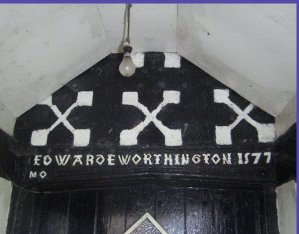
1653. The manor of Worthington appears to have been claimed by Thomas Langtree of Langtree in 1653.
1666. In 1666 there were in the township only twenty three hearths charged to the hearth tax. The largest house, Mr. Worthington's, had four hearths.
1710. North Hall was the property of James Hodson of Ellerbeck in Duxbury, and descended to Lord Cardwell,.
1717. Lydia Rycroft of Aspull in 1717, as a 'Papist,' registered her life estate in Coppull mill bridge tenement.
1682. The sale of the manor took place between 1682 and 1690. The purchaser was Thomas Clayton.
1783. Sir Richard Clayton was almost sole landowner in 1783. The manor then descended, with the adjoining manor of Adlington, to Mr. J. R. B. Clayton Dawbeny.
![]()
Worthington Mill.
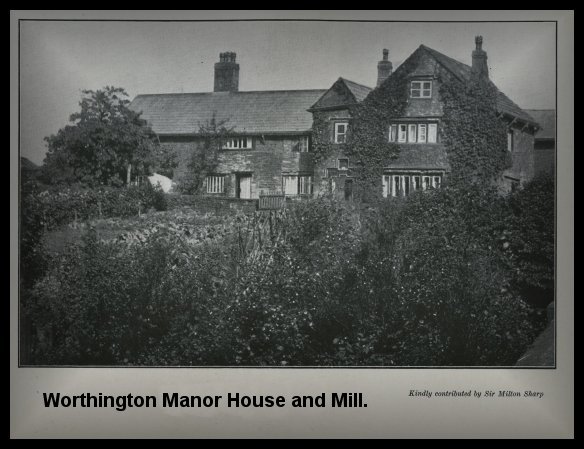
Worthington Arms (Left) St. Wilfrids Church Standish Lancashire.
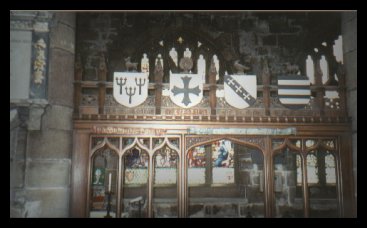
Worthington Family Grave St. Wilfrids Church Standish Lancashire.
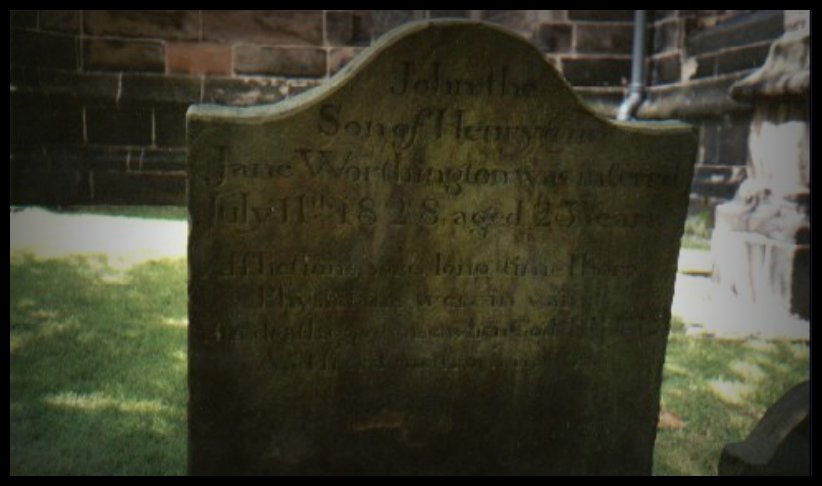
![]()
The Family history of the Worthington Family of the USA.


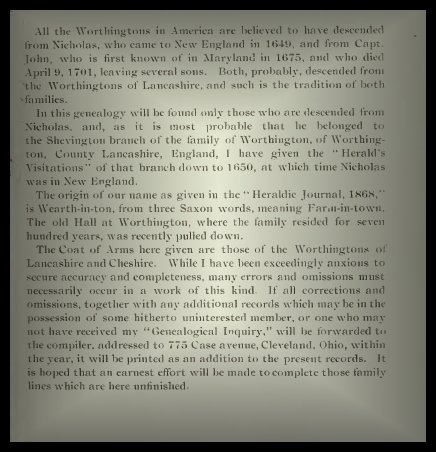
The Family history of the Worthington Family of the USA. - DOWNLOAD PDF File.
![]()
Neighbours of the Worthington Family were the Standish Family of Arley.
The Standish Family of Arley and Burgh at Duxbury were a branch of the Standish Family of Standish Hall.
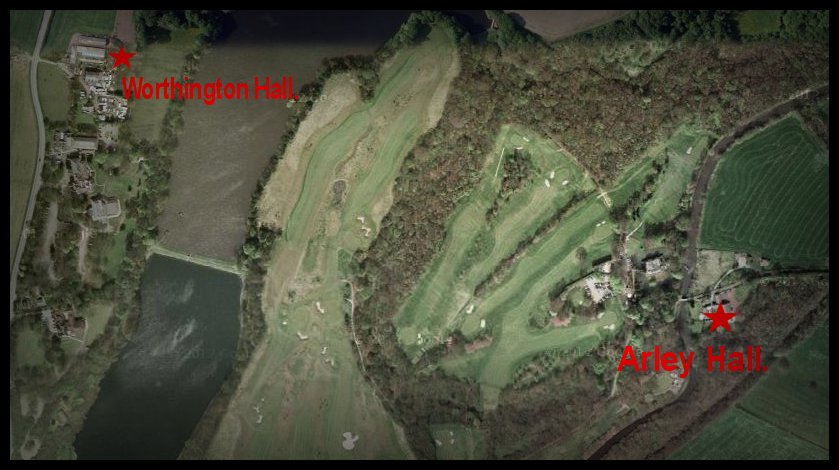
WORTHINGTON HALL
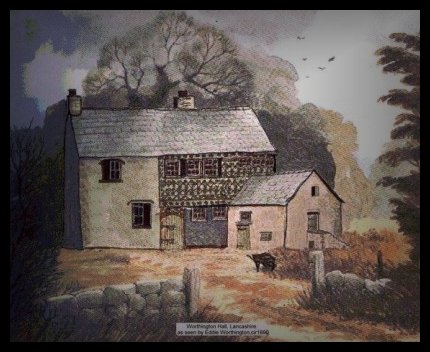
ARLEY HALL
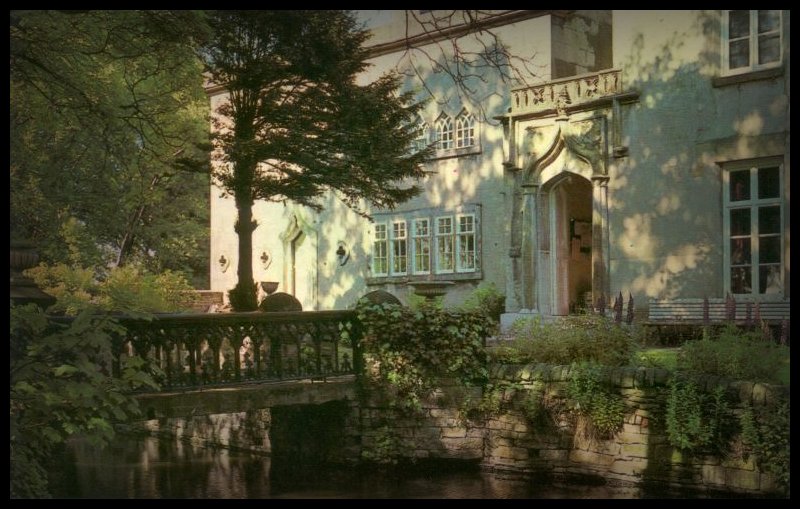
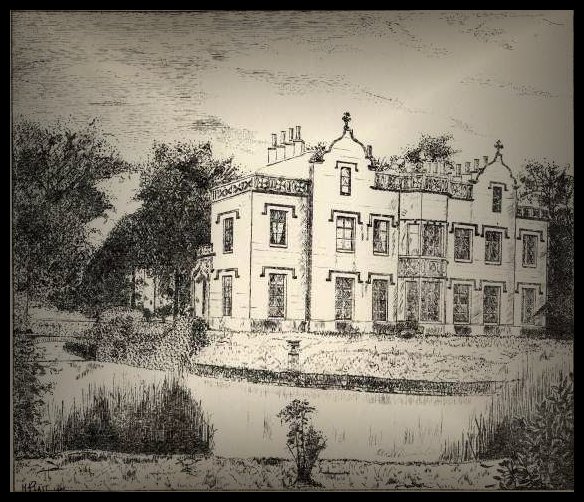
![]()
Worthington in the year 2011.
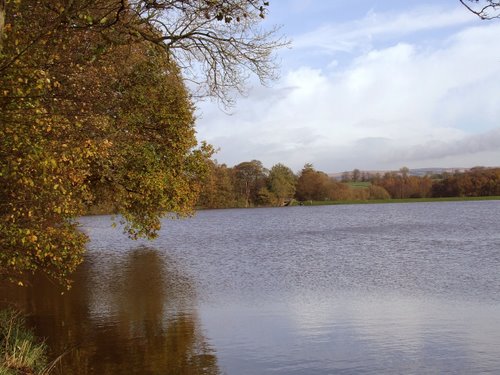
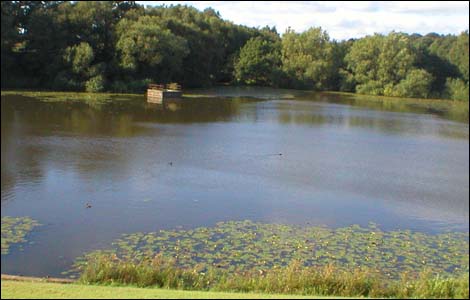
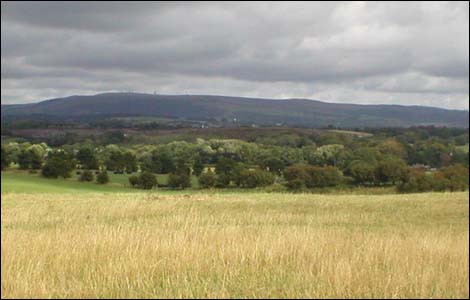
![]()
|
1 |
658, including 20 of inland water;Census
Rep. 1901. |
|
2 |
Subs. R. Lancs. bdle. 250, no. 9. |
|
3 |
Lancs. Inq. and Extents (Rec. Soc. Lancs. and Ches.), i, 54; Withington has here
been miswritten for Worthington, as in other cases, and Wrightington also is
sometimes confused with it. |
|
4 |
Mamecestre, ii, 286. |
|
5 |
Ibid. 374. |
|
6 |
The constables of Worthington were
formally summoned to attend the court leet in 1658 and later; Manch. Ct.
Leet Rec. iv, 235, &c. |
|
7 |
Cockersand Chartul. (Chet. Soc.), ii, 512–13. The bounds in one grant started
from the Harestone and went round by Greenlache, near Hungercroft,
Blakelache, the highway to the bridge over the brook from Langtree, and along
the Langtree boundary to the street. Thomas de Salghall and Roger his son
afterwards released land to the canons in Worthington and Langtree. |
|
8 |
Final Conc. (Rec. Soc. Lancs. and Ches.), i, 47. |
|
9 |
Lancs. Inq. and Extents, i, 154. |
|
10 |
Inq. and Extents, i, 248. William de Worthington was defendant in a
Blainscough suit at Michaelmas 1282 and his son Hugh in the following Jan.;
De Banco R. 47, m. 63 d.; 48, m. 21. |
|
11 |
He was a juror at an Aughton
inquisition in Dec. 1282; Inq. and Extents, i, 258. In 1288 he was
found to render a pair of spurs annually for having common in the Ferrers
holding in the Standish district; ibid. 272. Hugh de Worthington and Dionysia
his wife occur at Halsall in 1280; Final Conc. i, 157, and see the
account of Halsall. |
|
12 |
Inq. and Extents, i, 315; the name is wrongly given as Writington. |
|
13 |
A settlement of part of the estate
of William and Alice his wife was made in 1318, by which two messuages with
land and meadow in Turley Moor were to remain to Hugh and John sons of
William. Henry son of William de Worthington and Henry son of John le Waleys
put in their claims; Final Conc. ii, 29. Two years later the manor of
Worthington, apart from the portion just referred to, was settled on William
son of William de Worthington; Henry de Worthington again put in his claim;
ibid. ii, 39. |
|
14 |
Mamecestre, ii, 288. |
|
15 |
The name occurs first in the
subsidy roll of that year; Exch. Lay Subs. (Rec. Soc. Lancs. and
Ches.), 49. On the other hand Alice widow of William de Worthington was
claiming dower as early as Michaelmas 1331; De Banco R. 287, m. 127. |
|
16 |
Feud. Aids, iii, 89. Hugh son of William de Worthington claimed the
custody of Coppull during a minority in 1362; De Banco R. 411, m. 76. |
|
17 |
Kuerden MSS. iii, W 27. Ellen
widow of John de Worthington occurs in 1403; ibid. C 33. |
|
18 |
Ibid. W 27; William son of Hugh de
Worthington granted to Gilbert rector of Standish and to Thomas de
Worthington the manor of Worthington. The same William is named in a deed of
1384–5; ibid. |
|
19 |
Hugh Worthington was tenant in
1473; Mamecestre, iii, 479. In the same year Hugh son of William
Worthington agreed with Thomas Norris of Speke that his son William should
marry Elizabeth daughter of Thomas; Norris D. (B.M.), no. 950. Hugh occurs
also in 1461 and 1483; Kuerden MSS. iii, B 16. He is probably the Hugh with
whom the recorded pedigree begins. From Blainscough inquisitions it appears
that Richard Worthington was lord of the manor in 1526 and Edward Worthington
in 1578 and 1591. Thomas the father of Edward Worthington died in 1566; Manch.
Ct. Leet Rec. i, 108. |
|
20 |
Visit. (Chet. Soc.), 125. The succession given is: Hugh -s.
William-s. Richard -s. Thomas -s. Edward -s. Thomas (living) -s. William
(aged sixteen). |
|
21 |
Dugdale, Visit. (Chet.
Soc.), 344. The last-named William was still living, and had a son Thomas,
aged thirty-four. Thomas died in 1670, and the heir was a brother Edward, who
sold the manor; Piccope MS. Ped. (Chet. Lib.), ii, 314. |
|
22 |
A fine was made in 1682 respecting
the manor of Worthington, with messuages, water-mill, lands, &c., in
Worthington, Coppull and Charnock Richard, the deforciants being Edward
Worthington, Jane his wife and two others, perhaps mortgagees; Pal. of Lanc.
Feet of F. bdle. 208, m. 38. In another fine two years later the plaintiff
was Reginald Bretland and the deforciants were Edward Worthington, William
Salvin and Dorothy his wife; ibid. bdle. 212, m. 19. In 1690 the plaintiff
was Thomas Clayton and the deforciants were Edward Worthington and Jane his
wife; ibid. bdle. 225, m. 20. |
|
23 |
See the account of Adlington. |
|
24 |
Land tax return at Preston. |
|
25 |
Many of the references to
Worthington appear to belong really to Coppull, originally a part of it. |
|
26 |
Hugh Adlington in 1525 held lands
in Worthington and Coppull of Richard Worthington by a rent of 4s.;
Duchy of Lanc. Inq. p.m. vi, no. 73. |
|
27 |
Royalist Comp. Papers (Rec. Soc. Lancs. and Ches.), iv, 60. Lands in the
township were held by the family in 1519; Pal. of Lanc. Plea R. 128, m. 8. |
|
28 |
See the account of Duxbury. |
|
29 |
Engl. Cath. Non-jurors, 125. |
![]()